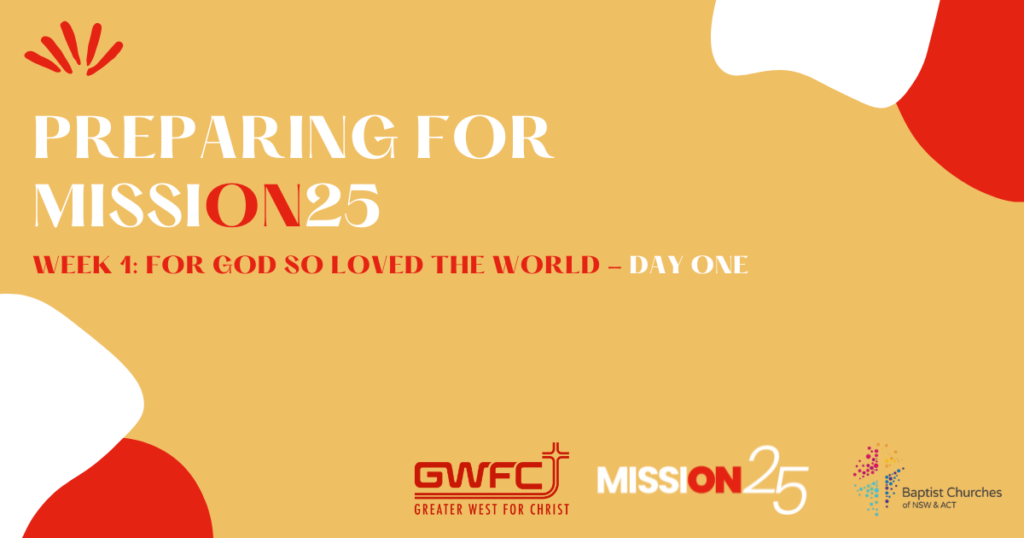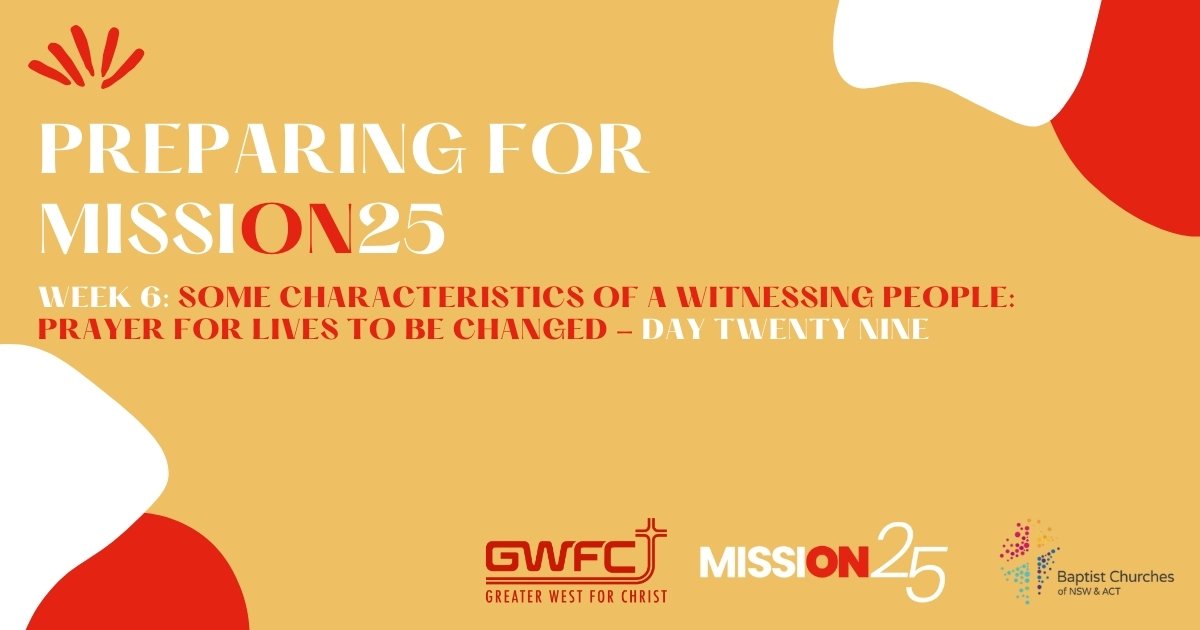Day 1 (Monday): John 3:16-17
Today’s Passage
Read the passage – John 3:16-17
John 3:16-17 are some of the best-known verses in the Bible, but with familiarity the question remains of what they mean for us. Have a think of the following questions
Numbers 21:4-9 speaks of the Israelites being discouraged and speaking out against Moses. A plague of snakes then occurs, and the bronze snake was made so that people could be saved from the snake bites. How is Jesus being lifted up similar to the salvation of the Israelites in terms of dealing with our issues?
Questions to Consider
- God loves the world. What does this tell you about who God is?
- How is God’s love personal to you?
- What kind of attitude should we have to society if God loves the world?
- Why do we have hope for eternity?
- Why did God send Jesus?
- God gives people a choice to believe. How should this affect how we treat others?
Prayer
- Lord, help me grow in humility and dependence on You as I prepare for this course.
- Pray asking for a deeper understanding of God’s love
- Ask that God’s love would be understood in our local community
Go Deeper
“I sat for two hours with a young man who could not believe in God’s love. When I say, “could not”, that is quite literally how it seemed. He could not believe in God’s love in much the same way that he was physically incapable of running a mile in three minutes or lifting a car off the ground with his bare hands.
It wasn’t that he couldn’t understand what I was saying. Nor had he thought through a set of logical arguments that demonstrated to his mental satisfaction that either there wasn’t a God or, if there was, he couldn’t be a God of love.
It was—with the distressing predictability that clergy and counsellors know all too well—that deep down in his memory and imagination there was a sense of unlovedness: of family and teachers telling him he was no good; of never being praised or cherished or celebrated.
Being made to feel inferior, stupid, weak. So, the capacity to receive love, to feel love, to understand love, had been covered over as though with a thick, calloused, leathery skin.
What does John 3:16 really mean?
Perhaps we need to think into that sad, depressing frame of mind in order to hear again, with full force, words that have become so well known that they are in danger of forming part of a Christian’s mental wallpaper—the pattern so familiar that we no longer notice it.
“This is how much God loved the world,” writes John, “enough to give his only, special Son. After all, he goes on, God didn’t send the Son into the world to condemn the world, but so that the world could be saved by Him.”
How difficult it is to get the balance right.
‘On the cross, when Jesus died,’ goes the hymn, ‘the wrath of God was satisfied.’ I used to say to my clergy that I would only let them sing that line if, every second time they sang the hymn, they sang ‘the love of God was satisfied.’
God’s wrath, properly understood, is an aspect of His love: it is because God loves human beings with a steady, unquenchable passion that He hates Apartheid, that He hates torture and cluster bombs, that He loathes slavery.
If God is not wrathful against these and so many other distortions of our human vocation, He is not loving.
The Bronze Serpent: A Strange Clue
But how does the sending of the Son deal with evil? Isn’t it just a futile, grandiose gesture?
John’s whole Gospel is his large-scale answer to this question, and unless we read the entire book with this in mind, we will miss the point.
But in this passage, we are given a single, very cryptic clue:
“Just as Moses lifted up the snake in the desert, in the same way, the Son of Man must be lifted up, so that everyone who believes in Him may share in the life of God’s new age.” (Numbers 21)
The story is told in Numbers 21. The Israelites grumbled, as they often did, and God allowed a plague of poisonous snakes to come upon them—a deep, evocative symbol of their own discontent and rebellion.
As people were dying from the snakebites, God commanded Moses to make a bronze replica of a serpent and put it on a pole. The people were urged to look at the uplifted snake and live.
(The snake on the pole, in turn, has become a symbol of healing to this day.)
The Cross and the Lenten Journey
Perhaps that is one of the most important lessons of the Lenten journey. The meaning of the cross will come upon us, like a great shadow into which we must walk, in the days to come.
At the moment, it is enough to know that we are travelling to the place where we will see Jesus lifted up, so that we may escape the condemnation that wells up within the darkness of our own hearts.
But it is God who is saying, in Jesus:
“No! That’s not the point! I have sent my Son to rescue you from that condemnation!”
Yes, it is true: people love darkness rather than light, and don’t want to come to the light. Again, every pastor knows that only too well.
There’s a glorious, beautiful world out there, but some people turn in on themselves, bundling themselves up in darkness to avoid being dazzled.
But the God who came into the world in the person of His Son, the Word of life, can and will speak His gentle, powerful invitation once more:
“Come to the light. Look at the Son of Man, lifted up for you. Think the unthinkable: this is how much God loved the world. Believe, trust, and share—already, in the present time—the life of God’s new age.”
——-
Tom Wright, Lent for Everyone: Mark, Year B (London: SPCK, 2012), 84–87.
Songs for Worship and Reflection


